Chimney Leaks
Leaking chimney? The starting point to fixing your problem is identifying the source of the leak, starting by looking at your chimney cap, crown, flashing, brick and mortar, and flue.
When it Rains, it Leaks
Chimney leaks can be a serious problem for homeowners. Leaks can be caused by chimney cover issues, cracks in the crown, condensation, brick issues, flashing issues, or other reasons. This page discusses the most common sources of chimney leaks, why they occur, and how to fix them.
Scroll to read on, or use the links below to hop to a specific section.
- Chimney Crown Cracking
- Condensation & Other Issues
- Flashing Issues
- FAQs
Chimney Leaks as a Result of No Chimney Cap or Faulty Chimney Cap
A chimney without a cap is like a house without a roof. If a house has no roof and it rains outside, there’s nothing protecting the contents of the house from getting wet. Chimney leaks in heavy rain is a common complaint from homeowners with older chimneys that have missing or damaged caps.
The same theory applies to chimneys. Chimneys typically have a chimney cap (also called a chimney cover) to protect them from rain. If you don’t have a chimney cap, if it’s not installed properly, or if it’s damaged, you may run into problems.
Problem #1 -There is No Chimney Cap
If your chimney is leaking because it doesn’t have a cap, your best bet is to hire a contractor to install a new chimney cap that protects you from water making its way into your home through your chimney. Installing chimney caps takes technical know-how, as well as knowledge regarding roof safety.
Of all the potential causes of chimney leaks, this is perhaps the most straightforward to diagnose and repair. While we always recommend using an experienced contractor for work at heights on roofs, if you are planning on doing this yourself, the most important thing to get right is selecting a high quality stanless-steel chimney cap and ensuring that you have proper dimensions for the area you’ll be capping.
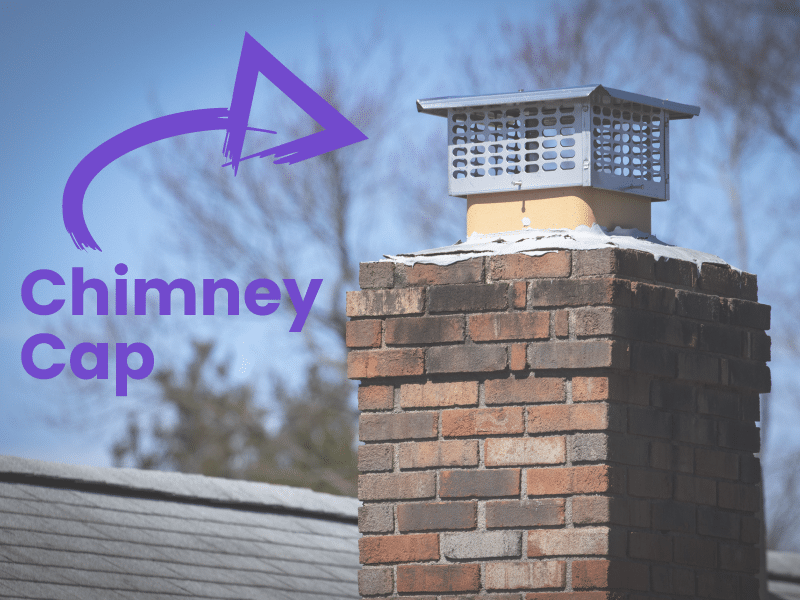
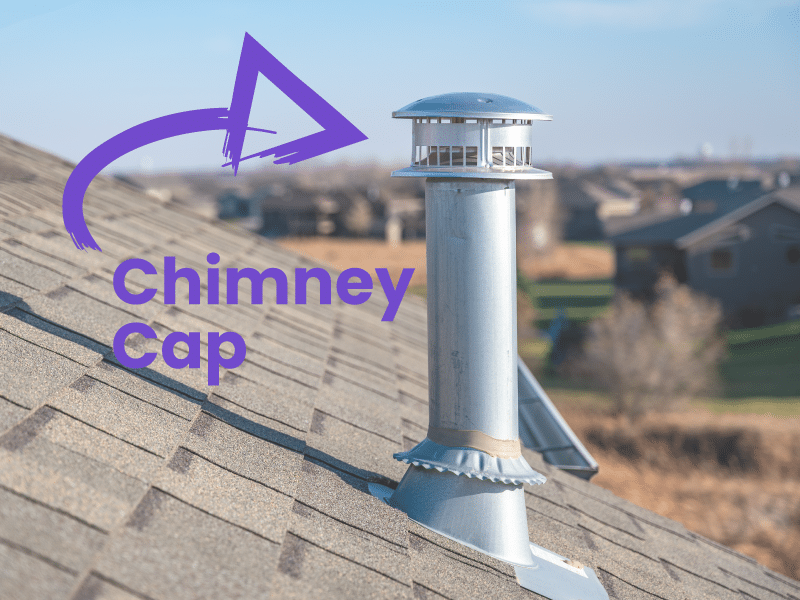
Problem #2 - CHIMNEY CAP ISN't SET CORRECTLY OR IS DAMAGED
These situations are highly individual. In some instances, a small crack has formed along the top of a cap as a result of animal or debris damaged, which can be repaired relatively easily.
In others, strong wind gusts may have shifted the fit of the cap on the chimney crown, creating space for water get in. If there’s no damage to the cap, it can simply be properly refit to the chimney crown. Sometimes, creosote buildup on and within the cap can inhibit proper airflow. This problem can usually be corrected as part of regular sweeping or cleaning maintenance.
In some situations, however, the damage to the cap is not worth repairing and it needs to be replaced. If your cap is showing signs of rust and corrosion, it becomes less effective and subject to cracking. It also becomes more susceptible to animals breaking through the mesh to gain access to the chimney. Rust and corrossion in your cap is one of those problems you want to stay ahead of, and why it’s worth investing in a high quality stainless steel chimney cap.
If you’re not sure about the condition of your cap, either send us some pictures (if you’re able to safely obtain them) or give us a call to discuss.
Chimney Leaks from Crown Cracking Issues
Alongside chimney cap issues, cracks in your chimney crown are a leading cause of chimney leaks. The chimney crown is the slab that typically sits between the chimney cap and the brick and mortar of the chimney breast.
Common reasons for chimney crown issues include:
- Water damage from water seeping into the concrete and freezing and expanding.
- Shifting of the chimney structure as a whole.
- Improper curing of concrete during the initial crown install (i.e. shrinking).
- Improper or poor initial construction.
There are three primary categories of problems: those that can be resolved with relatively simple masonry repairs, those that require a crown rebuild, and those that necessitate full chimney reconstruction work.
Understanding the extent of your chimney crown cracking issues requires an experienced eye – we recommend calling an experienced chimney contractor for help in assessing the severity of the problem.
Problem #1 - Minor Chimney Crown cracking, crumbling, or chipping
Some chimney crown cracking problems can be fixed by concrete repair by an experienced mason. Even if the job appears relatively simple, like most chimney work, this is not a job we recommend homeowners tackle themselves unless they’re experienced in working on roofs and have the right skillset.
Problem #2 - Moderate Chimney Crown problems
If the cracking or damage to your chimney crown is extensive enough, you may find yourself in need of a rebuild. At some point it becomes better to simply build and install a new crown rather than try to individually repair all of the cracking issues that can be identified.
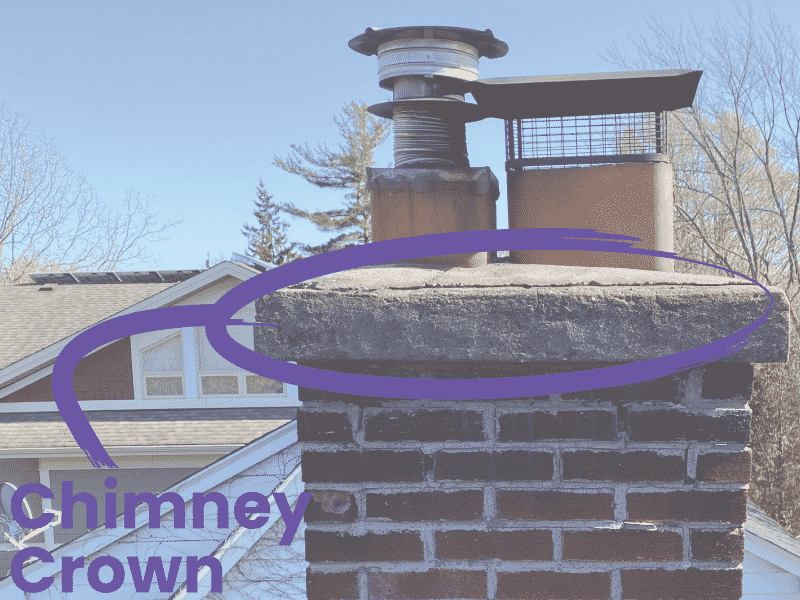
Problem #3 - Structural Crown Problems
In the worst case scenario, water damage has permeated the cap and worked its way into other parts of the chimney structure. This may include damage to the brick and mortar, the flue, or the flashing. If the problems are widespread enough, it may require a complete rebuild of some or all of the brickwork to ensure that all damage is properly mitigated. At this point, it is worth considering whether the chimney is worth rebuilding, or if it should simply be removed.
*** For chimney crown repairs and replacements, we generally recommend covering the crown with a cover to protect it from water, weathering, and mechanical damage.
Chimney Leak Repair: Chimney Chase Covers Help Leak-Proof Your Chimney
Chimney chase covers are intended to cover, and slightly overhang, the full top of your chimney. Made of metal, they are an excellent means of protecting the components of your chimney from wind, rain, and mechanical damage. They are one of the easiest and most reliable chimney leak solutions out there.
Sometimes also referred to as a “chase pan” or “top flashing”, chase covers are typically made out of one of four types of metal:
- Stainless steel
- Galvanized steel
- Aluminum
- Copper
The chase cover should be constructed with a slightly elevated middle area and cross-breaks in order to allow water to flow off naturally in multiple directions.
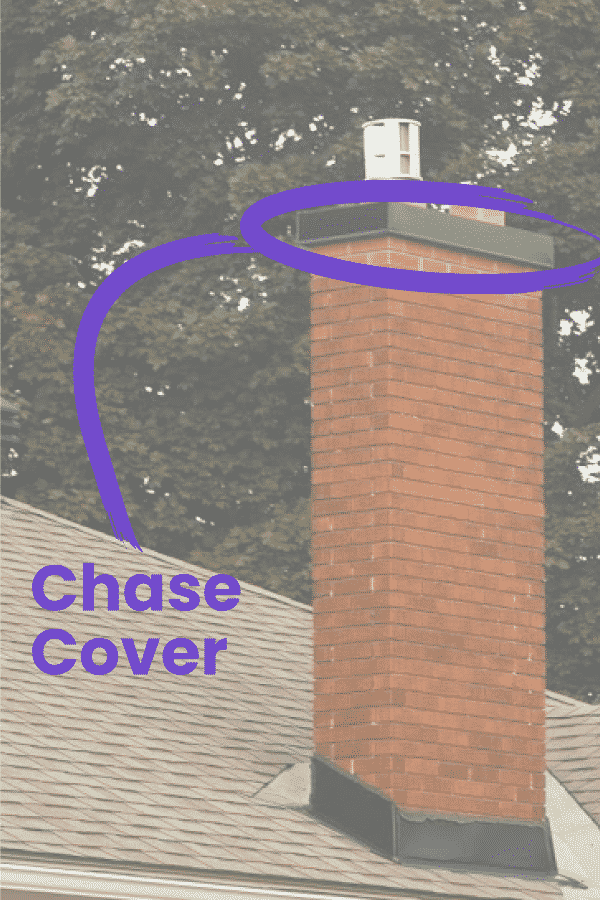
WeChimney Specializes in Chase Cover Installations
Chase covers can be installed both on working and decommissioned chimneys.
For homeowners who do not use their chimney but want to keep their chimney for aesthetic reasons, the chimney pipes can be cut down below the top of the chimney and covered with a custom fitted chase cover. This is one of the most cost-effective ways of mitigating the risk of chimney leaks and degradation while keeping the chimney in tact.
In situations where the chimney is still in use, holes are cut in the middle of the chase cover to allow piping to protrude through.
If you’re looking for a custom chase cover installed in Ottawa, give us a call to discuss!
Chimney Leaking from Brick & Mortar Issues
Causes for issues with the brick and mortar within your chimney are very similar to the causes for chimney crown issues. The #1 culprit is water freezing, expanding, thawing, and repeating the process over and over again.
Both bricks and mortar are semi-porous materials that retain water. It’s important to ensure that your chimney’s waterpoofing is acceptable and that too much water is not passing through the brick and mortar and finding its way into the interior chimney structure.
Common reasons for brick and mortar issues on chimneys include:
- Improper or poor initial masonry work during construction.
- Water damage as a result of water making its way into cracks and seams and expanding repeatedly over time.
- Poor waterproofing, allowing too much water to pass through the bricks or mortar (i.e. saturation).
Problems with your chimney’s brick and mortar can range from minor to severe. If you think you’ve got issues with your chimney, give us a call to discuss, or drop us a line through or form and send over a couple of photos.
Leaking Chimney from Flashing Problems
Flashing is a type of sheet metal installed at the connection points between your roof and your chimney to create a watertight seal.
Flashing is a common source of chimney leaks and one of the first areas that should be evaluated when performing a chimney inspection for leaks. Because flashing is the primary barrier between your roof and your chimney, flashing leaks have the potential to create structural problems on your roof. If you have a flashing leak, chances are it’s leaking into the substructure of your roof, which is definitely an area you do not want water.
Flashing issues can be difficult to detect. Even a small hole or gap in sealant can provide an avenue for significant amounts of water to get into your roof substructure over time.
Flashing issues can be difficult to detect. Even a small hole or gap in sealant can provide an avenue for significant amounts of water to get into your roof substructure over time. If you suspect you may have issues with your flashing, give us a call or drop us a line to discuss.
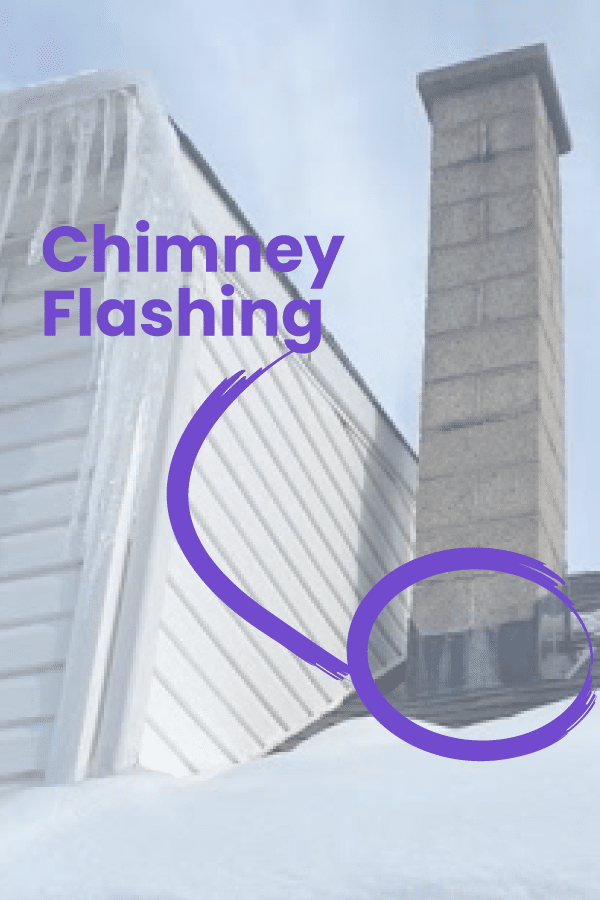
Chimney Leaks Caused by Condensation
Typically caused by a bad liner fit, or no liner at all, leaks caused by condensation problems are typically the result of moisture collecting on the interior brickwork of the chimney.
Sometimes referred to as “chimney sweating”, interior damage can be caused both by freezing and thawing cycles and by the mixture of exhaust fumes with condensation.
If you feel condensation may be the culprit behind your chimney leak, your best bet is to schedule a liner inspection to determine the nature of the problem.
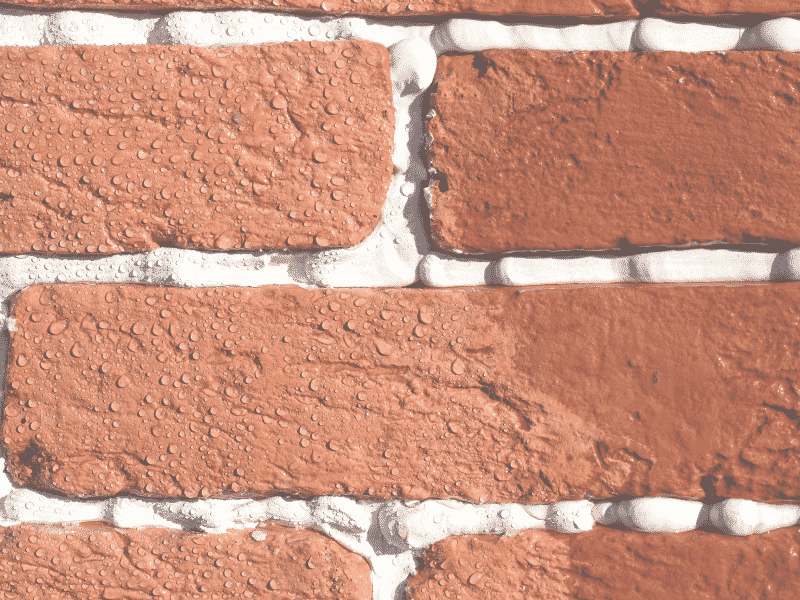
Frequently Asked Chimney Leak Questions
Flashing is the material most commonly used to prevent leaks at the connection point between the roof and the chimney. Read more about chimney flashing here.
The best way to fix a leaking chimney immediately is to hire an experienced chimney contractor. It takes knowledge and experience to identify the potential sources of chimney leaks. If you've got questions about your leaking chimney, give us a call to discuss today.
Yes, most homeowner's insurance policies do cover chimney leaks. To be safe, contact your broker or insurance company to verify, however.
The first place to check is your chimney cap if you find that water is entering your chimney when it rains. While there are a number of possible causes for rain water entering your chimney, the most likely culprit is a damaged or missing chimney cap.
If the roof around your chimney is leaking, that's a sign of a potentially serious problem. Water entering your roof's substructure is a problem that should be addressed immediately. While we are always available to help, an experienced masonry contractor or roofing contractor are also options to contact. Regardless of who you call, this is a problem that you should address as soon as practically possible.
While water can leak through a chimney, it shouldn't. If water is saturating through your brick and mortar, this is likely due to poor waterproofing. If water is entering elsewhere, it's likely the result of a problem with your chimney cap, cover, flashing, or liner.
Masonry contractors are typically your best bet for fixing chimney leak problems, though if the leak involves your roofing substructure it may require the involvement of a roofing contractor. Of course, the team at WeChimney is always available to help! Give us a call or drop us a line to discuss your chimney leak today!
